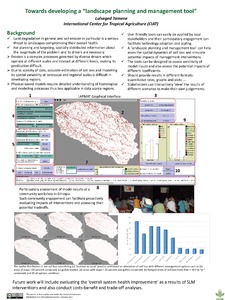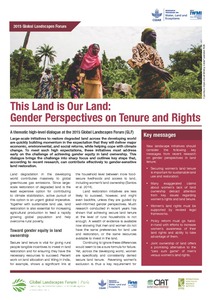The secondary forest situation in Sri Lanka: a review
Most forests in Sri Lanka are secondary, are mostly confined to the dry and intermediate zones of the country, and arise out of swidden agriculture. The majority of secondary forests which regenerate after swidden farming in the dry parts of Sri Lanka are grown from vegetative parts, that are from remaining roots and stumps. Secondary forests provide numerous products of importance to local people. They also help to bridge seasonal gaps in livelihoods.
Towards developing a “landscape planning and management tool”
The value of tropical forest to local communities: complications, caveats, and cautions
The methods used to value tropical forests have the potential to influence how policy makers and others perceive forest landsforestlands. A small number of valuation studies achieve real impact. These are generally succinct accounts supporting a specific perception. However, such reports risk being used to justify inappropriate actions. The end users of such results are rarely those who produced them and misunderstanding of key details is a concern. One defence is to ensure that the ultimate users appreciate shortcomings and common pitfalls.
Third quarter progress report. Kirindi Oya Irrigation and Settlement Project: Project impact evaluation study
Towards sustainable management and development of tropical secondary forests in Asia: the Samarinda proposal for action
Secondary forests comprise a large and growing proportion of the forest cover in the tropics and are very important at the local, national and regional levels for a wide range of products and environmental services. However, knowledge and expertise regarding secondary forests is still limited, and they are inadequately addressed in forest policy, planning and research.
This Land is Our Land: gender perspectives on tenure and rights
Trade-offs and alternative livelihoods of the forest-dependent people in the Malinau research forest
Topic Working Group on Spatial Analysis and Modeling (TWG-SAM): A report
Many modelers and spatial analysts engaged in the Mekong, Ganges, Andes, Volta, Limpopo and Nile basins are grappling with similar issues:
How do we get hold of and share quality information?
How do we integrate bio-physical and socio-economic data?
What are the best methods to fill data gaps and move across scales?
How do we select the most appropriate models from the plethora available and transfer these tools and technologies to partners with limited means?
How do we link different models and build feed-back loops...?
Trading forest carbon to promote the adoption of reduced impact logging
The Clean Development Mechanism (CDM) of the Kyoto Protocol raised the hopes of many, that payment for carbon sequestration services would provide a significant incentive for sustainable management practices in industrial forestry in tropical countries. Data to assess how realistic these hopes are, remain scant and high degree of uncertainty about CDM rules make assessment hazardous. The analysis in this paper focuses on the potential for using carbon trading to stimulate adoption of reduced impact logging (RIL)-based sustainable forest management.
Towards an integrated global framework to assess the impacts of land use and management change on soil carbon: Current capability and future vision
Intergovernmental Panel on Climate Change (IPCC) Tier 1 methodologies commonly underpin project-scale carbon accounting for changes in land use and management and are used in frameworks for Life Cycle Assessment and carbon footprinting of food and energy crops. These methodologies were intended for use at large spatial scales. This can introduce error in predictions at finer spatial scales. There is an urgent need for development and implementation of higher tier methodologies that can be applied at fine spatial scales (e.g.




